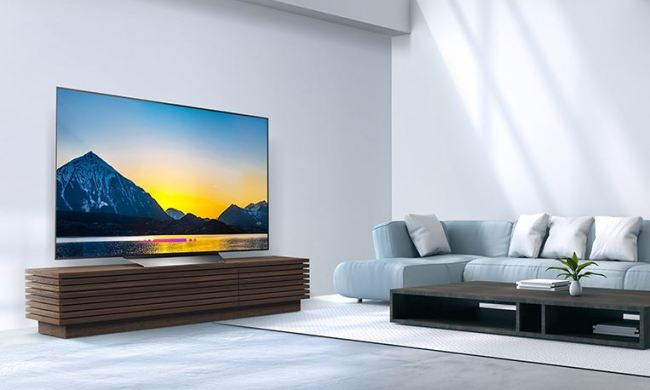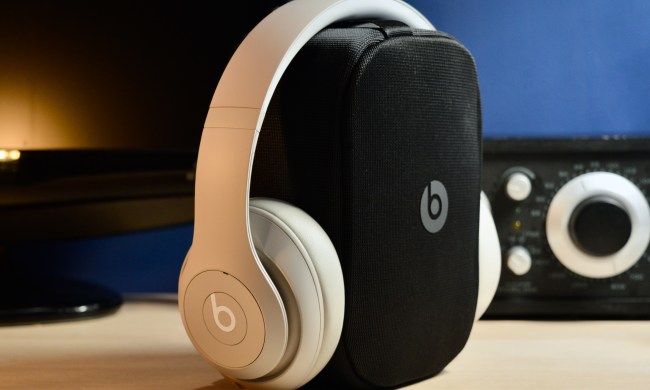
- Improved audio
- Improved battery life
- Easy-to-use controls
- USB-C charging
- Might struggle with glasses
- Not for audiophiles
I’m a big fan of not reinventing the wheel. If a product is truly good, it’ll see iterative updates, improving on what’s there instead of admitting that something wasn’t right. (Or, worse, changing things just because it can.)
That describes the Shokz OpenRun Pro 2 almost perfectly. These don’t re-invent anything, really. They’re still niche headphones, built with an intended use in mind — specifically, exercise and other active types. And they offer an alternative for those who just don’t like earbuds or over-the-ear headphones.
That’s not to say there’s nothing different about the OpenRun Pro 2. They improve on what came before in some very good — and interesting — ways.
About this review
I’ve been using the Shokz OpenRun Pro 2 — a review unit sent from Shokz — for about two weeks ahead of their public launch. I used them mostly with an iPhone 15 Pro but also with a Samsung Galaxy S21. (The phone used doesn’t really matter much with a product like this.)
The OpenRun Pro 2 were on firmware R_05_20240517, and we didn’t receive an update while using them.
What are these things?
First, some context. If you’ve ever been to the gym or otherwise seen someone with a weird-looking set of headphones that look more like a sunglasses strap than what you’d consider to be
In that sense, the term “headphones” doesn’t quite work. They’re not headphones in the sense that they sit atop your ear or into your ear like earbuds. They sit just outside your ear, and instead of using vibrations to move air to create sound, the vibrations go through your skull. (It maybe sounds a little more metal than it is.)
Why, you ask? To leave your earhole open for other sounds, because there are tons of instances in which you need to be able to hear what’s going on around you, and exercise is one of those times. So you can listen to music or a podcast or whatever but still hear traffic around you. It’s a safety thing. So there’s no noise cancellation here. Just the entertainment of whatever it is you’re listening to, and the information of what’s going on in your environment.
Fit and finish
The OpenRun Pro 2 feel more like wearing a neckband than any sort of headphones or earbuds you’ve ever used. The speaker/buds/ear things — the parts that make the sound — sit just in front of your ear, with loops keeping things in place. The two sides are connected with a sturdy and fairly stiff wire.

All in all, it’s still a pretty comfortable fit, even though it’s definitely a little different than traditional headphones and earbuds. There are two sizes available — “Standard” and a smaller “Mini” option that takes about 0.83 inches off the total length of the band. If you know you have a bigger head, stick with standard. If you don’t know, I’d wait and find a demo model in a store somewhere and try ‘em on.
Shokz said it did some work on the firmness of the wire loop, too. I can’t speak to the difference since I don’t wear the older models every day, but it’s been comfortable enough in my use, whether I was just wearing them throughout the day, or actually bouncing around and being active. Shokz says the OpenRun Pro 2 use 16% less “clamping force” than their predecessors.

The whole kit is clad in the sort of soft-touch rubber you’d expect from a pair of sport headphones. (That’s just what I’m going to call them from here on out.) Our review unit came in a high-vis orange. There’s also a black option available.
What’s new
For those familiar with Shokz and OpenRun (my experience with these dates back to the aforementioned Aeropex), everything’s going to look very familiar. But there are two major differences in the OpenRun Pro 2.
Charging changes
First is that Shokz has ditched the proprietary magnetic charger. That’s both good and bad — but I’d say it’s more of the former. The magnetic charger was extremely simple to use — you’d just let the magnets line things up and start charging. But proprietary chargers are bad because they charge one thing and one thing only. Now you can use any USB-C charger. (A USB-C to USB-A cable is included.)

The flip side is that is that you now have to flip up a little flap to get to the USB-C port on the OpenRun Pro 2. It’s not a huge deal, though you do have to make sure to seat it properly when you’re closing things back up. It also means that the OpenRun Pro 2 are IP55 certified instead of IP67. In layman’s terms, that means they should survive being sprayed with water, but not necessarily if immersed in water. That’s probably not a big deal for most folks in most cases, but it is something to be aware of.
But you should be just fine sweating into these things while exercising or living in Florida.
Hybrid audio
The other major change is that the OpenRun Pro have moved from only using bone conduction to a hybrid system that uses bone conduction for the mids and highs, and a more traditional speaker that moves air to help reproduce lower frequencies. Shokz has branded this “DualPitch.”

Why the change? It sounds better, Shokz says. And indeed, it does sound better — with some caveats, of course. This sort of setup is never going to sound as good as earbuds or over-the-ear headphones. It’s not supposed to.
That’s not to say the audio quality couldn’t have been better on the previous models. I’d always avoided listening to music while I was on bike rides with my older bone-conducting sets because it sounded pretty awful, with almost no bass. I wouldn’t call myself a fidelity snob, but I need a little low end. Podcasts were good enough, though.
With the OpenRun Pro 2, the audio absolutely has improved. There is now some low end. Maybe even a good bit, actually. And it’s definitely being pushed by the air-conducting part of that DualPitch thing. Cover the two grilles with your thumbs and you can hear exactly how much of the soundstage is handled by the air-conducting part — it’s like applying a pretty strong high-pass filter. Shokz’s documentation says the OpenRun Pro 2 handle frequencies of 20Hz to 20kHz.
You still need to properly set your expectations, though. These aren’t the best-sounding things in the world. They’re not supposed to be, and they’re not going to be. And that’s not a strike against them. I measure the OpenRun Pro 2 against what came before. And in that sense, they’re definitely a marked improvement. They’re maybe not quite as good as the OpenFit and OpenFit Air (and I prefer the latter among those two because of the fit), but the OpenRun Pro 2 have definitely improved the sound for this kind of open-ear headphone.
What they’re like to use
If you’ve ever used any of Shokz’s other open-ear products, you’ll be very familiar with what you get with the OpenRun Pro 2. The buttons are all in same places, and they’re still limited to the multifunction button on the left, and power/volume on the right. The multifunction button still does all the things you expect — play/pause, next/previous, and answering calls. And you’ll still have to remember how many presses does what. (That’s easy enough if you only ever use one pair of headphones.)

If you can’t remember, there’s a handy user guide inside the app. Speaking of which, the Shokz app also hasn’t really changed. This is where you’ll find the four preset EQ modes, or you can create your own. It’s also where you’ll handle multipoint — the ability to pair to more than one device.
And that’s about it, though it is worth at least checking in with the app every few months, just in case there’s a firmware update — the app is how you’ll handle that.
Otherwise, pair up and go, just like any other Bluetooth device.

I didn’t have any major issues with my glasses — both of the sunnies variety, and my usual readers. Your mileage may vary, though. My glasses aren’t your glasses, and my head’s not your head. Yes, the stems of your frames will sit atop the OpenRun Pro 2 — that’s just the way it is.
Battery life hasn’t been any concern. On paper you’ll get up to 12 hours of use. If you’re exercising that long, please stop and seek medical attention. If you’re just wearing them around the house or office for longer than that, get up, go outside for a few minutes, and plug them in while you’re taking a walk.
Call quality was just fine when stationary. Less so if you’re huffing and puffing, though that may be user error. Or exhaustion. (That said, I still recommend hopping off the bike instead of trying to actually talk to someone.
The bottom line
A couple of lingering questions:

Who are these not-quite headphones for? Anyone who wants to be able to listen to music or podcasts or whatever but still hear the world around them. You don’t have to be exercising — and despite their name, even running — to get something out of the OpenRun Pro 2. You just need to be OK with the slightly unorthodox (but it no way bad) way they fit. They’re different. Because they’re meant to be.
Will these be your only headphones? Again, I’m a big fan of having the right tool for the right job. This or the OpenFit Air is what I wear on bike rides. (Or, OK, the Ray-Ban Meta sunglasses.) These are not what I’d wear on an airplane. Probably not even in the gym, because I like shutting out all that grunting noise.
Should you get these instead of the OpenFit line? I think that’s going to come down to personal preference. There’s not so huge a delta between the audio quality between the OpenRun Pro 2 and the OpenFit that I’d say definitely get one over the other. (If $60 or so matters that much, get the OpenFit Air.) But they do feel pretty different on your melon, since OpenFit doesn’t have the connecting wire.
Are you really recommending them if they don’t sound as good as, say, the AirPods Pro? Absolutely. Because — and I really can’t stress this enough — these are headphones meant for a pretty specific purpose. Because of the way they work, they don’t have the same fidelity as other
And now they sound a lot better doing it.




